Life-saving pointers for parvo puppies
Parvovirus is a much dreaded diagnosis, but these fragile puppies can make it through. Here's how.

Rescuing the littlest patients. (Getty Images)In her discussion on “Parvoviral enteritis: Managing the smallest septic patients” at the recent International Veterinary Emergency and Critical Care Symposium in Grapevine, Texas, Medora Pashmakova, DVM, DACVECC, had an underlying message that if you help puppies survive the first three to four days of the infection, they usually make a rapid recovery. Easier said than done, though, right? (Likely, one reason the room was packed.) Here are Pashmakova's hints on getting these delicate patients successfully through all four stages of therapy.
Stages of therapy
First, treat the patient for shock. Pashmakova says crystalloids are the best choice in these patients. She recommends fluid boluses of 30 ml/kg. The pattern: administer the bolus, reassess the patient, repeat the bolus, reassess the patient … You get the picture. A trick for boluses in puppies is to administer them as quickly as possible-don't use a fluid pump that delivers over 20 to 30 minutes. Boluses should be complete within 10 minutes in order to effectively replenish volume and treat shock.
Second, rehydrate the patient. It's hard to properly detect dehydration in pediatric patients compared with adults because of many factors, says Pashmakova.
- Their total body water content is 10 to 20 percent more than in adults.
- Normal measures of dehydration just don't work: skin turgor is hard to assess, and their kidneys aren't even really working well until they are 9 to 10 weeks old.
- The cardiovascular system is immature and tachycardia is not a reliable indicator of shock as it is in adults.
So how can you detect dehydration? Pashmakova says to suspect it in any puppy experiencing diarrhea or vomiting. Look for things such as a urine specific gravity of > 1.020, cold extremities, dull mentation and pale mucous membranes.
To rehydrate the puppy, Pashmakova says to be sure to use an intravenous (IV) route, not a subcutaneous (SQ) route since SQ is not systemic and will take longer to circulate. She uses a weight scale to measure whether the patient is adequately rehydrated. For example, if you think the patient is about 5 percent dehydrated and it weighs 10 kg, at correct hydration, it should weigh about 10.5 kg. She recommends making this measurement scale a part of the treatment sheet and measuring the patient's weight frequently, especially when gastrointestinal losses are profound. The scale can help you measure losses as well as rehydration goals. Waiting 12 to 24 hours until the next body weight can set you far back. Measuring body weight every four hours is a reasonable starting point to help direct fluid therapy.
Calculated fluid rate case example
Why shouldn't you just do multiples of maintenance rate in puppies with parvovirus? You may not be delivering a sufficient amount of fluids, says Pashmakova. Take the case of a 10-kg dog:
Fluid delivery with a straightforward multiple of three times the maintenance rate: 10 kg x 60 ml/kg/day x 3 for 24 hours = 75 ml/hr
A calculated plan delivering adequate fluids: Rehydration (5% x 10 kg = 21 ml/hr) + GI losses (75 ml/hr) + metabolic needs (90 ml/kg/day x 10 kg = 37 ml/hr) = 133 ml/hr
That's almost twice as much fluid!
Third, replenish those worrisome GI losses. Pashmakova says veterinarians do pretty good on the first couple of steps of parvovirus treatment. It's this third one that often results in mortality. “GI losses is where we often fall behind because we're not keeping up with losses,” says Pashmakova.
The key here is finding a way to quantify the loss from diarrhea and vomiting. Pashmakova says you likely need more than two or three times maintenance rate. She recommends measuring how much the patient has lost every two or three hours (see “Calculated fluid rate case example”). A calculated fluid rate in a parvo case can actually be 6-7 times “maintenance”, which is why she advocates the use of objective metrics rather than thinking of these patients in multiples of maintenance. (Need inspiration? See “Consider the cholera cot.”)
Consider the human cholera cot
In human medicine, cholera produces similar symptoms and mortality as parvovirus in puppies. In cholera-heavy areas, sick patients are kept on a bed called the cholera cot that contains a hole in the canvas with a bucket set right underneath. The weakened patients can pass their stool while lying in bed, the nurses weigh the bucket, and then the nurses make sure to replace just as much fluid as was lost.
And Pashmakova says, again, that crystalloids are the mainstay of therapy in these patients. Synthetic starches have been used for decades to aid hypoproteinemic patients, but we are learning that the vasculature in sick (septic) patients does not retain starches within it the way that it does in healthy patients. Starches are just as able to leak out through the damaged endothelium as crystalloids are, dragging more crystalloid with it. Human medicine has documented significant morbidity associated with synthetic starches, especially in patients with sepsis and acute kidney injury. For this reason, the pendulum in veterinary critical care has swung largely away from using starches on a routine basis.
Fourth, provide metabolic maintenance. Early enteral nutrition, such as with CliniCare (Abbott Laboratories), Purina Pro Plan Veterinary Diets CN Critical Nutrition (Nestlé Purina PetCare), or Emeraid (Emeraid), has been proven to make a difference in patients with parvovirus, says Pashmakova. In one study, it resulted in shortening hospitalization by one day.1 Even though patients may likely vomit some of what you're feeding, if even half is still there, it's something. “Nutrition must be part of your medical management for these patients,” says Pashmakova.
Pashmakova is a fan of tube feeding, but it may not be appropriate in this case, she says, as placing a tube in a vomiting patient that is in an isolation ward and not supervised is risky. For tips on placing a nasogastric tube with radiographic guidance, click on over to the next page.
If you choose to place a nasogastric feeding tube, be sure to obtain radiographic confirmation (Figures 1-5), note the length of placement, and re-radiograph if you have concerns of dislodgement. Tips on ensuring correct placement:
1. Measure the tube all the way to the last rib (for nasogastric placement) or the ninth intercostal space (for nasoesophageal placement).
2. After placement, obtain a right lateral radiograph that includes the neck, thorax and stomach to confirm placement and visualize that there are no loops or kinks in the tube.
3. To ensure that the tube is not in the airways, it is most helpful to be able to visualize the tube outside of the plane of the trachea as it courses down the cervical and thoracic esophagus. “Orthogonal (a ventrodorsal projection in addition to a right lateral) views can help as the esophagus traverses the left side of the thorax and any tube located in the right hemithorax is likely in an airway,” says Pashmakova.
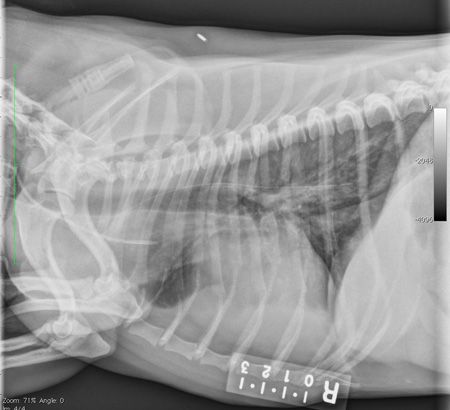
Figure 1: A right lateral radiograph showing a well-placed naso-esophageal tube. (Photos courtesy of Dr. Medora Pashmakova)
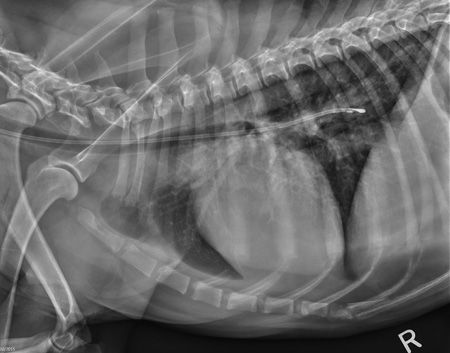
Figure 2: A right lateral radiograph showing a naso-esophageal tube possibly in the airway.
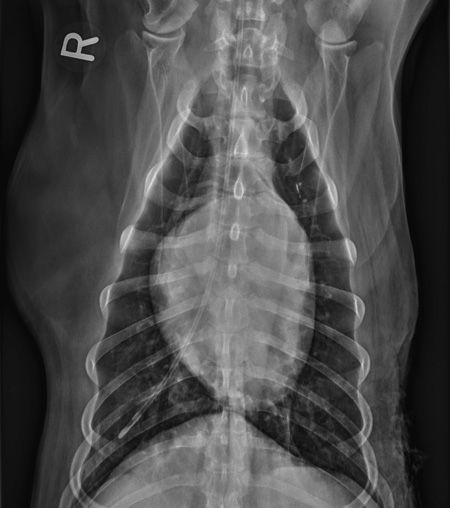
Figure 3: A dorsoventral radiograph of the same patient as in Figure 2 showing the tube is in the airway.
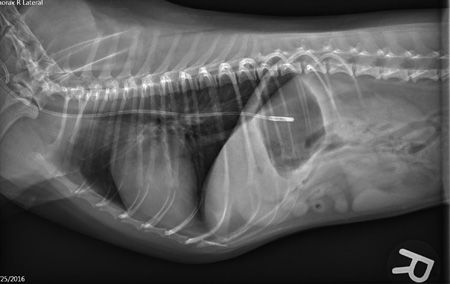
Figures 4: A right lateral radiograph showing a naso-esophageal tube looped in the cervical esophagus.
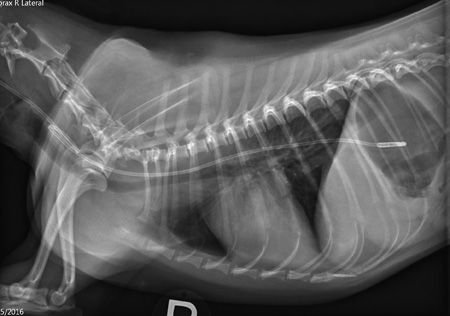
Figure 5: A more expanded version of Figure 4, highlighting the loop in the cervical esophagus. Note that if you don't include the neck in the image, you might not see it.Cost-savings measures
Getting through all four of these stages of treatment can be quite costly. The good news: Pashmakova says many measures traditionally taken in puppies with parvovirus aren't vital, which can save your clients a little money. For example, these puppies do not need plasma transfusions or antiviral or recombinant therapies that are expensive and not proven to make a difference. If there's no evidence of bleeding, performing coagulation testing is also unnecessary. The mainstays of therapy (providing fluids and nutrition, measuring electrolyte concentrations daily and performing a blood smear) give you the tools to treat and diagnose the most significant aspects of this process. It is an example of directing resources toward care rather than diagnostics, since the natural course of this virus is relatively predictable.
And for clients who can't afford several days of hospitalization for their puppies with parvovirus, Colorado State University has been experimenting with an outpatient treatment plan, Pashmakova dubs “Parvo to go.” Keep in mind that the study has not been published yet but might provide a guide for your patients. Hear even more about this protocol here.
Reference
1. Mohr AJ, Leisewitz AL, Jacobson LS, et al. Effect of early enteral nutrition on intestinal permeability, intestinal protein loss, and outcome in dogs with severe parvoviral enteritis. J Vet Intern Med 2003;17:791-798.
Newsletter
From exam room tips to practice management insights, get trusted veterinary news delivered straight to your inbox—subscribe to dvm360.